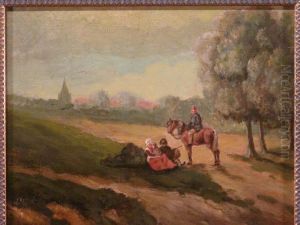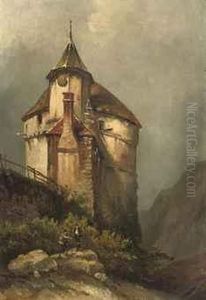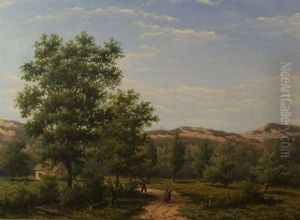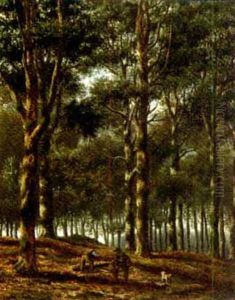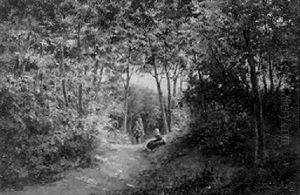Samuel Henri Mendes Da Costa Paintings
Samuel Henri (Mendes) Da Costa was a Dutch artist, born on April 14, 1863, in Amsterdam, Netherlands. He was known for his multifaceted contributions to the arts, which included sculpture, medallion-making, and teaching. Mendes Da Costa grew up in a time when the Netherlands was experiencing a cultural and artistic renaissance, which undoubtedly influenced his development as an artist.
His education in the arts began at the Rijksakademie van beeldende kunsten (State Academy of Fine Arts) in Amsterdam, where he studied under the tutelage of renowned teachers such as August Allebé and Bart van Hove. Mendes Da Costa's talent was evident early on, and he quickly established himself as a skilled sculptor, working primarily in traditional materials like bronze and stone.
Mendes Da Costa's work often showcased his ability to capture the human form with sensitivity and a keen eye for detail. His sculptures ranged from small, intimate pieces to larger, more imposing works. He was also known for his portrait medallions, which displayed a mastery of relief work and an ability to capture the essence of his subjects with a few well-placed lines and forms.
Throughout his career, Mendes Da Costa was active in the Dutch art community. He was a member of Arti et Amicitiae (Art and Friendship), a society of visual artists and art lovers based in Amsterdam, which played a significant role in the city's artistic life. His contributions to art were recognized by his peers, and he enjoyed a reputation as a respected artist and educator.
In addition to his artistic practice, Mendes Da Costa was also committed to education. He taught at the Quellinusschool, an institution known for its focus on applied arts, where he influenced a new generation of Dutch artists. His teaching extended his impact on Dutch art well beyond his own works.
Samuel Henri Mendes Da Costa's career spanned several decades, and his influence was felt not only in the field of sculpture but also in the broader context of Dutch art history. He passed away on February 20, 1931, in Amsterdam, leaving behind a legacy of artistic excellence and a body of work that continues to be appreciated for its craftsmanship and expressive power.
